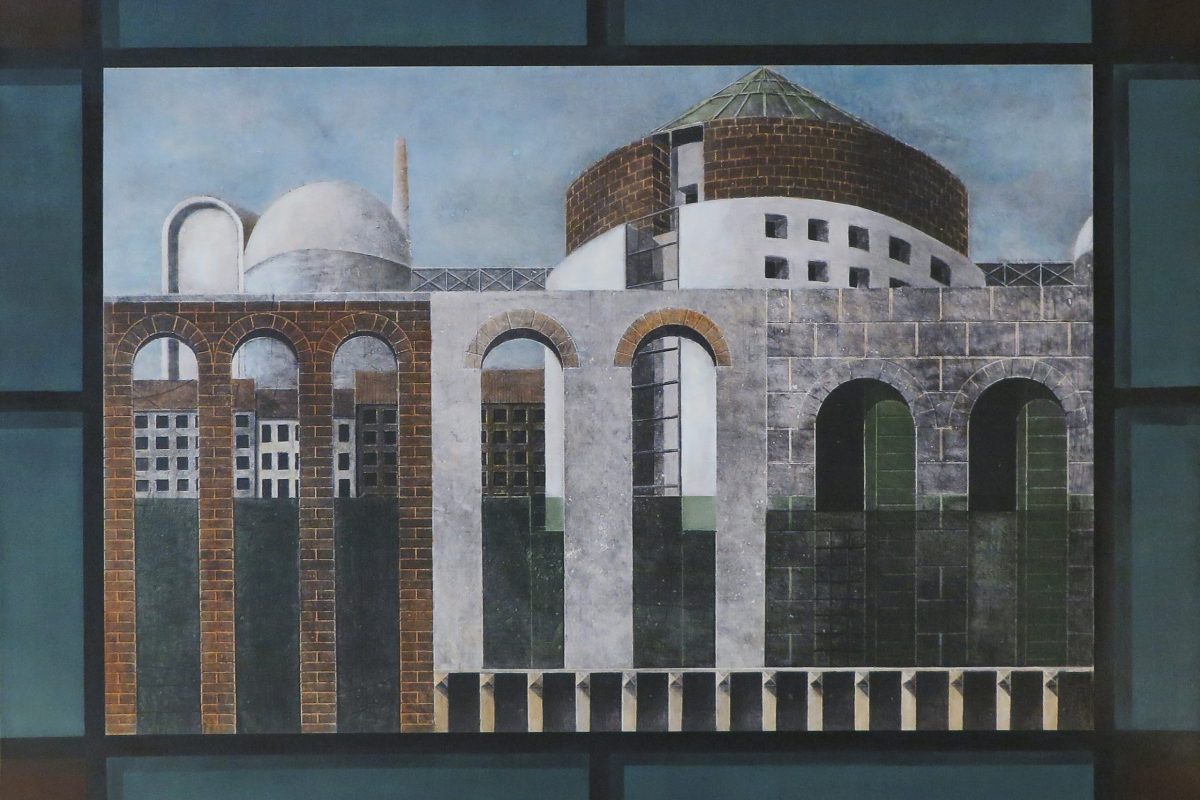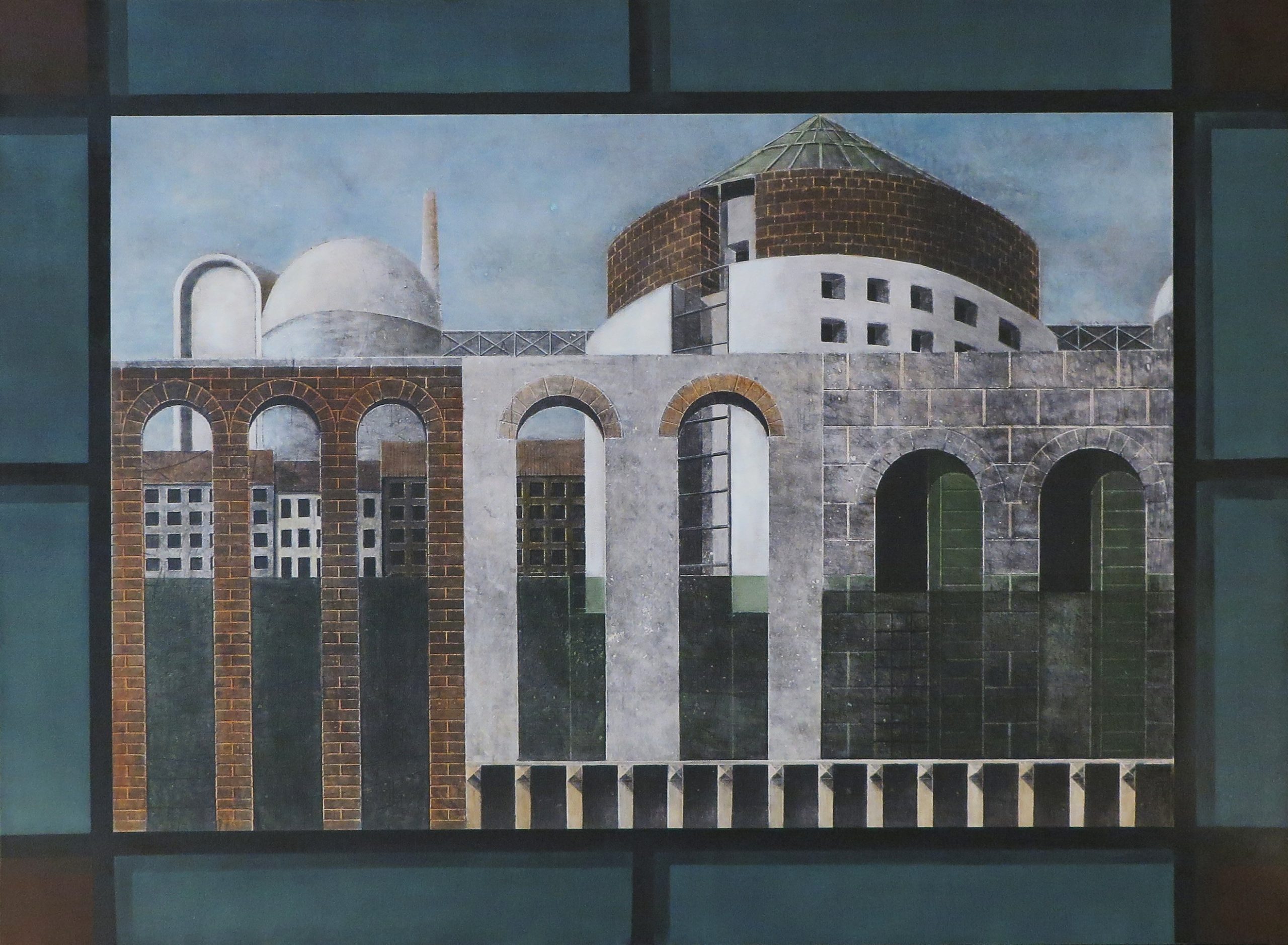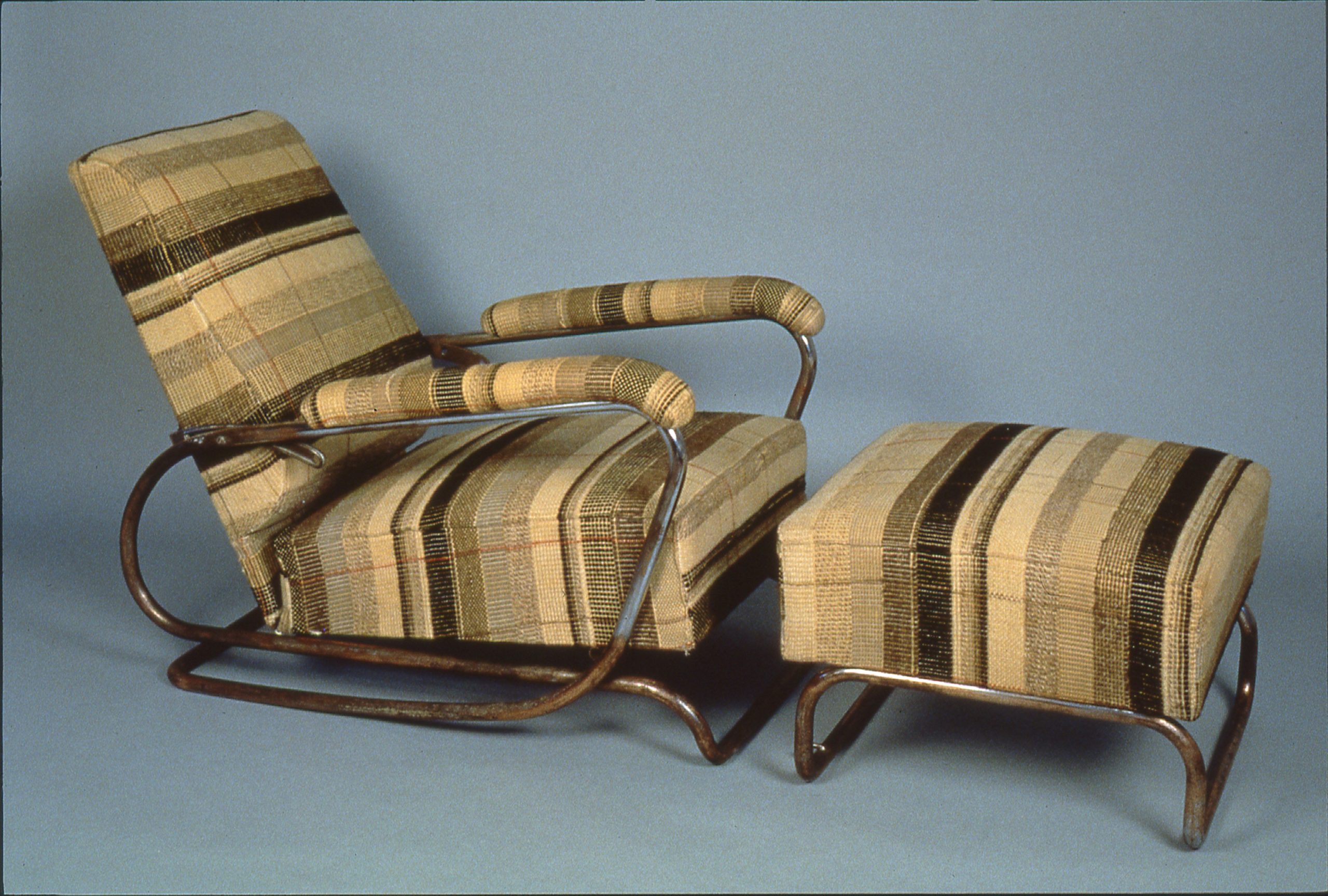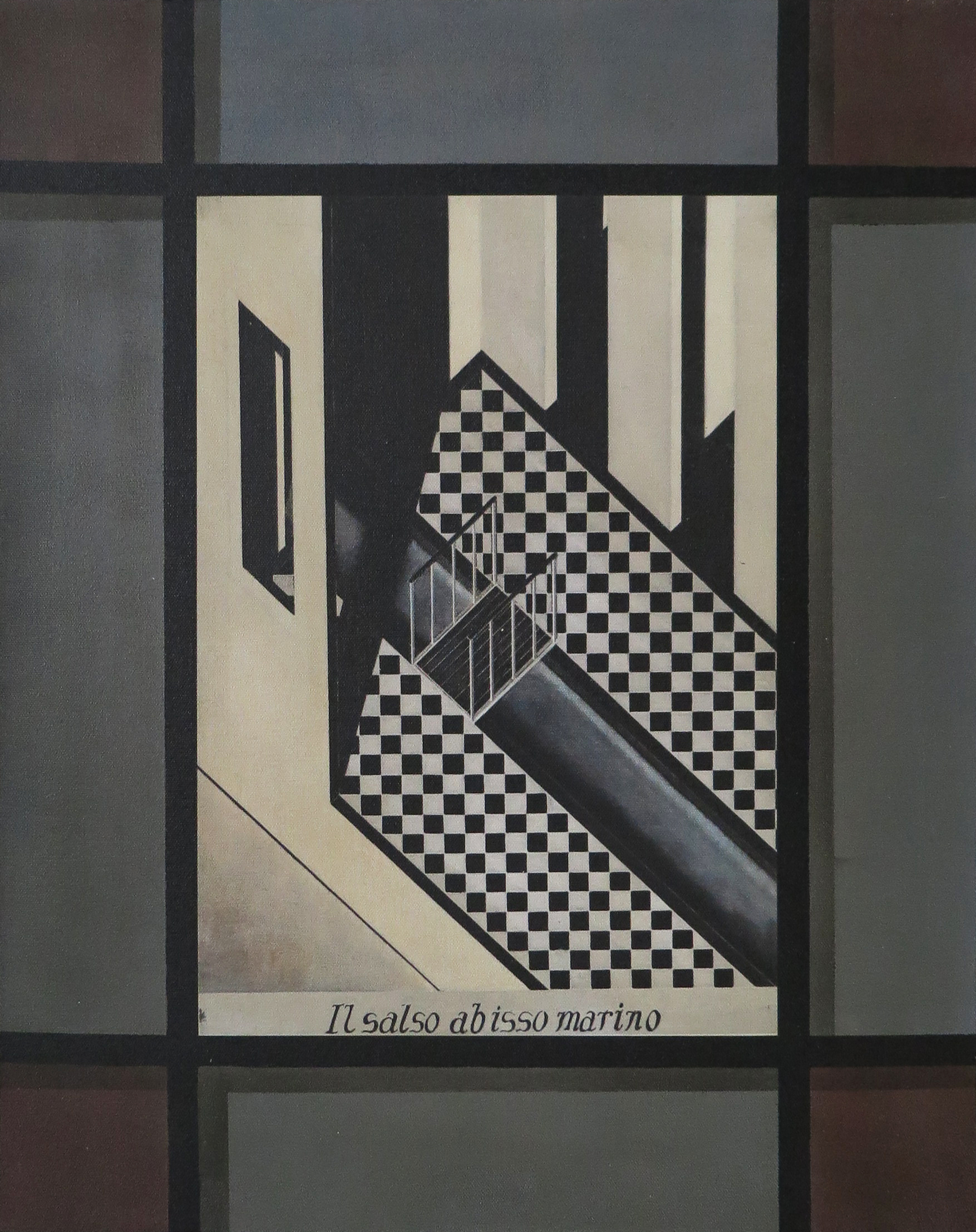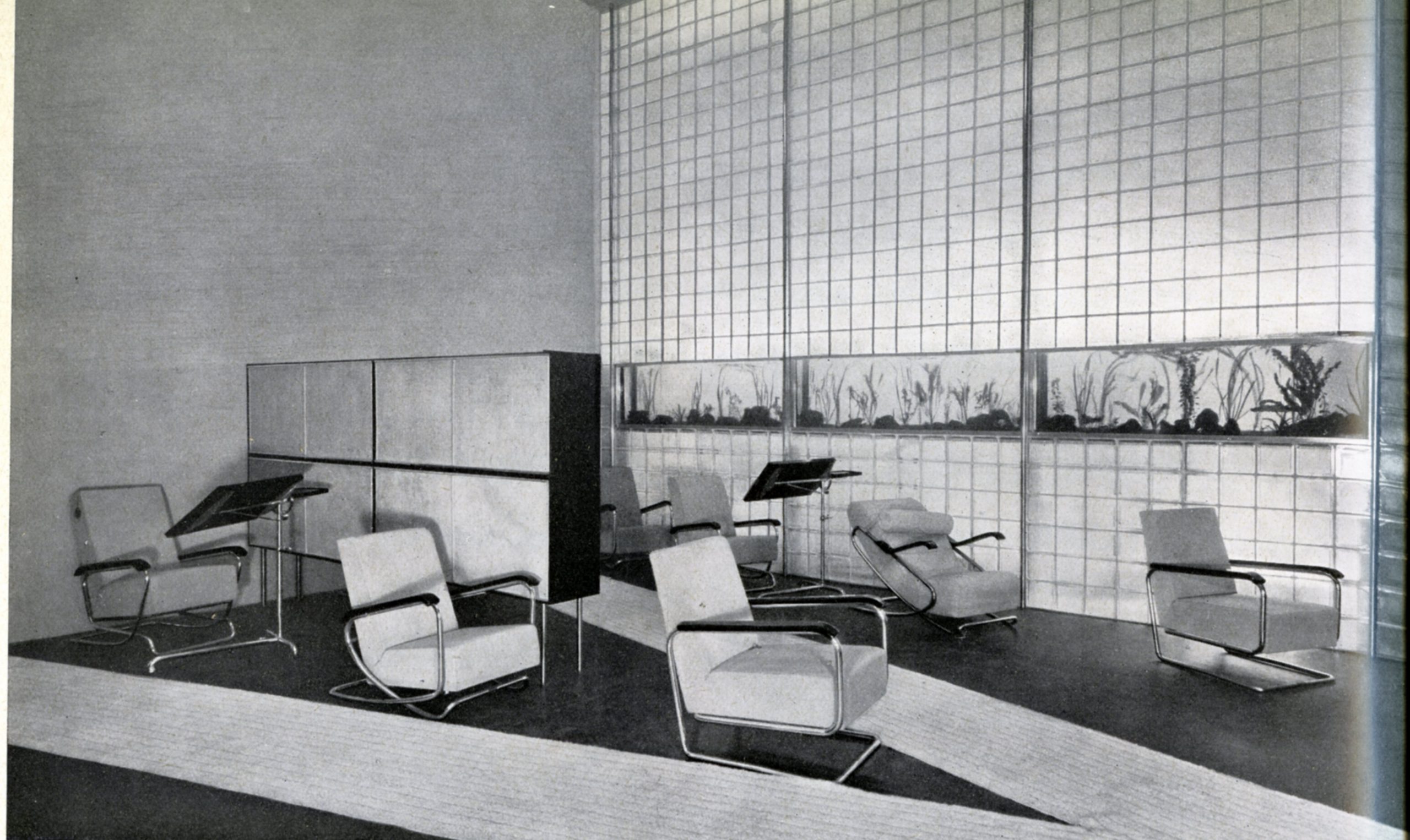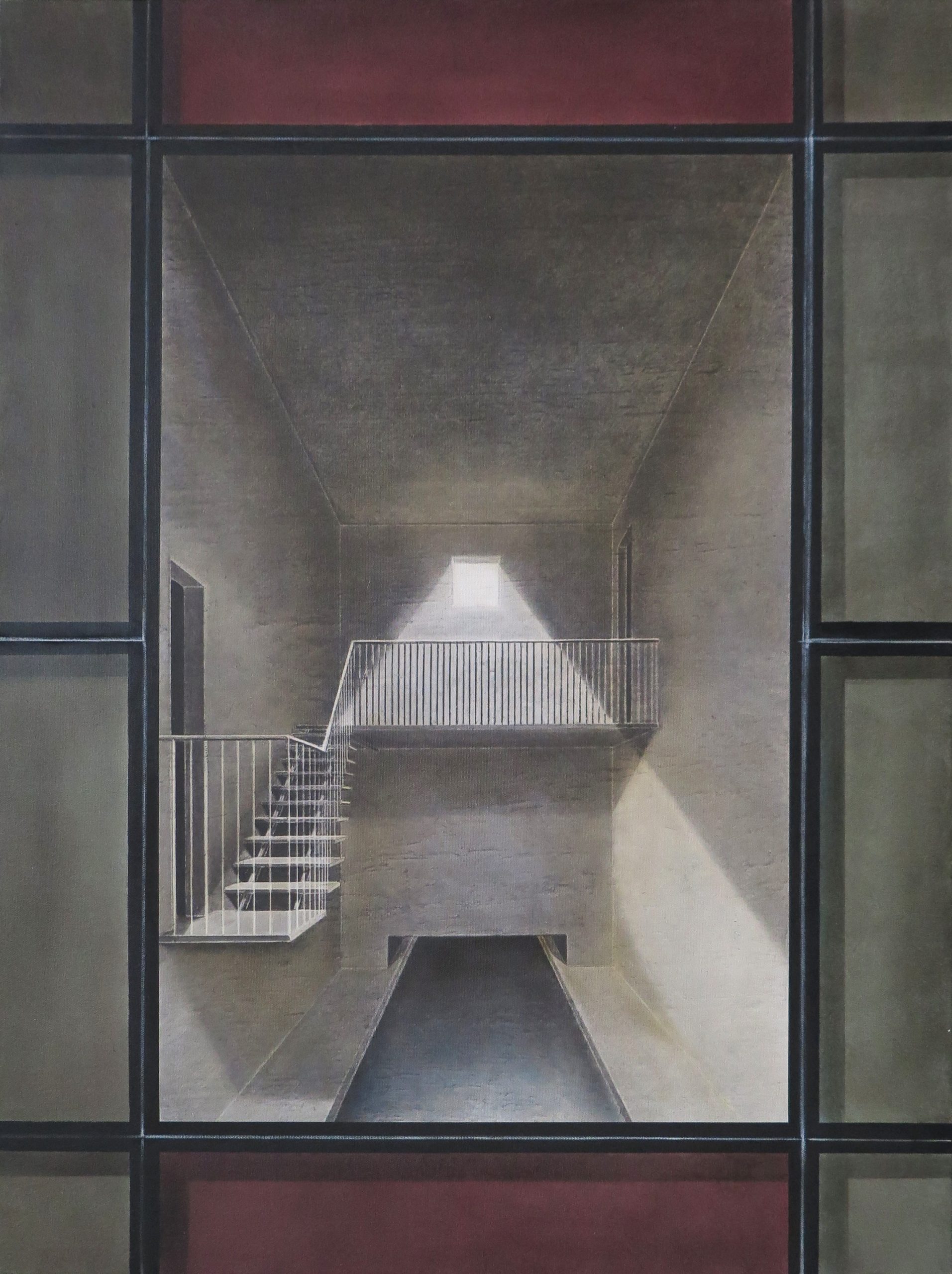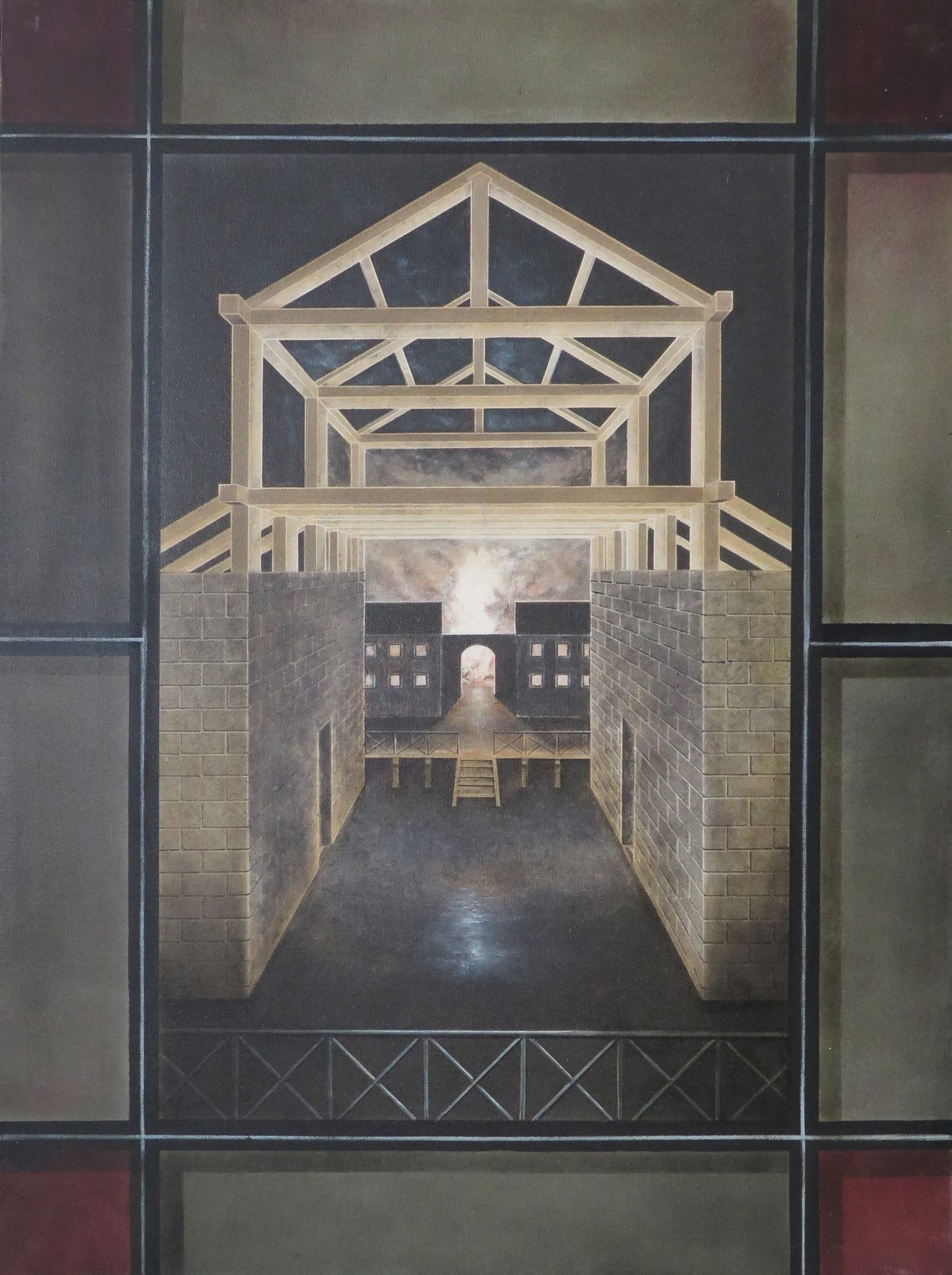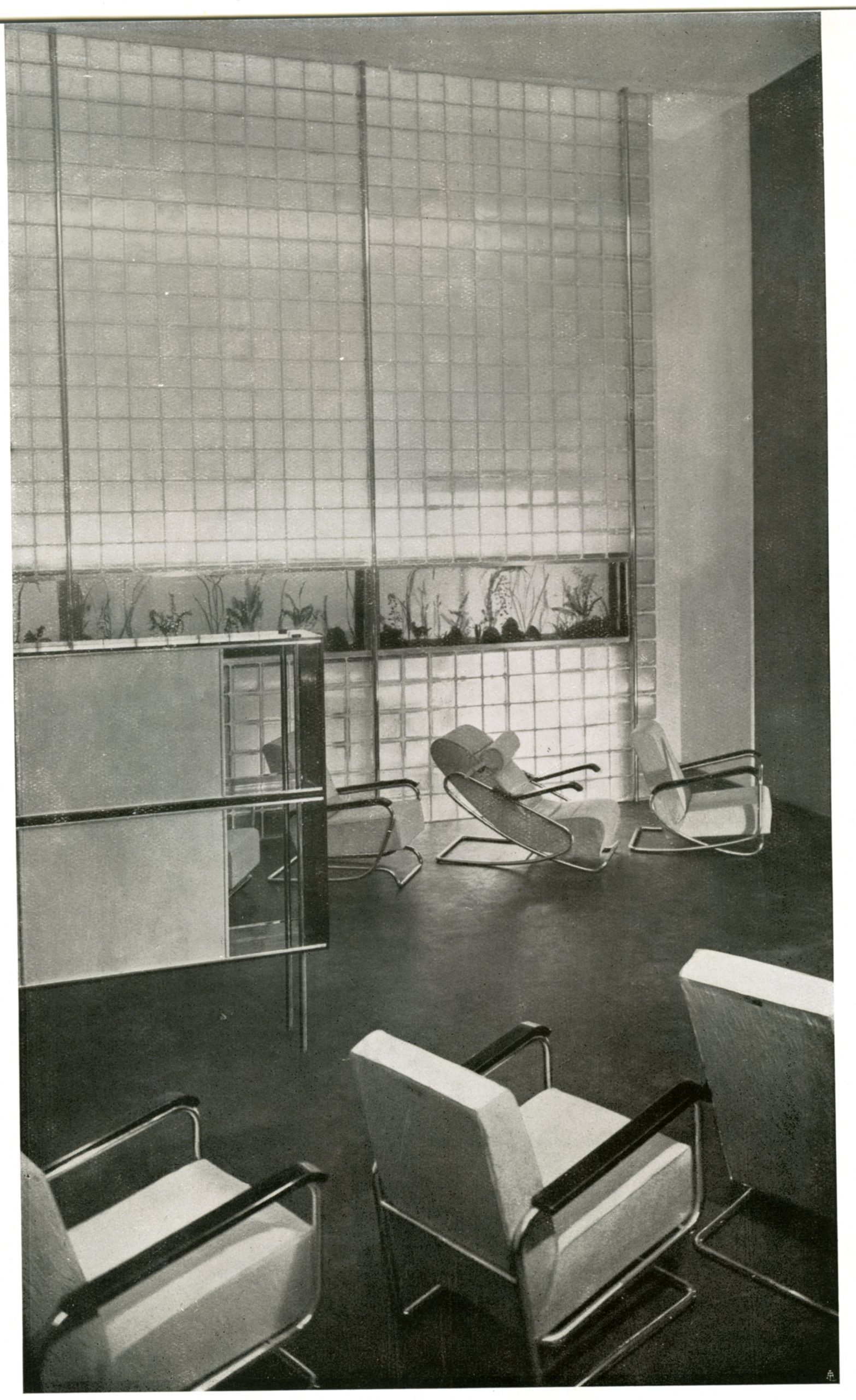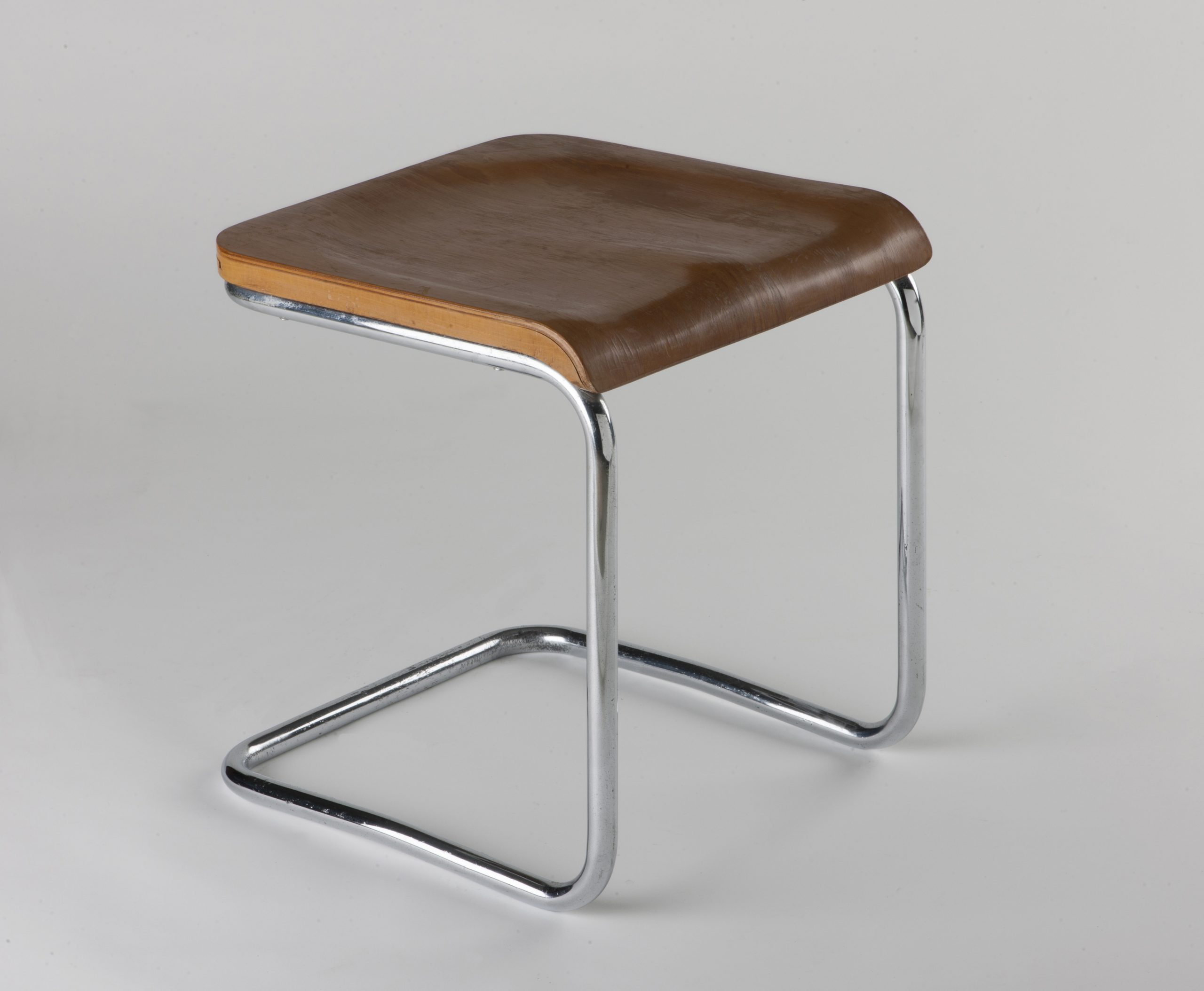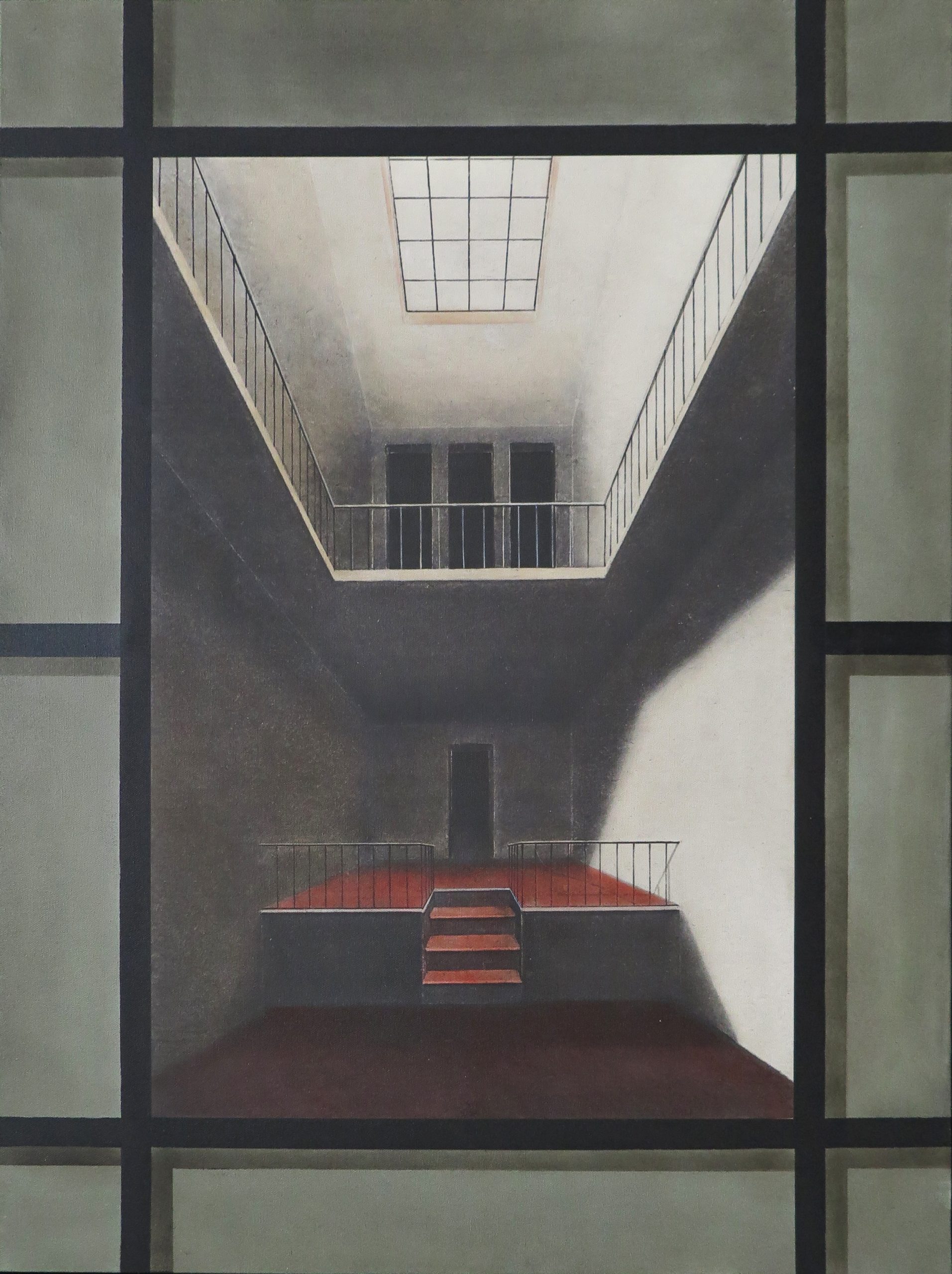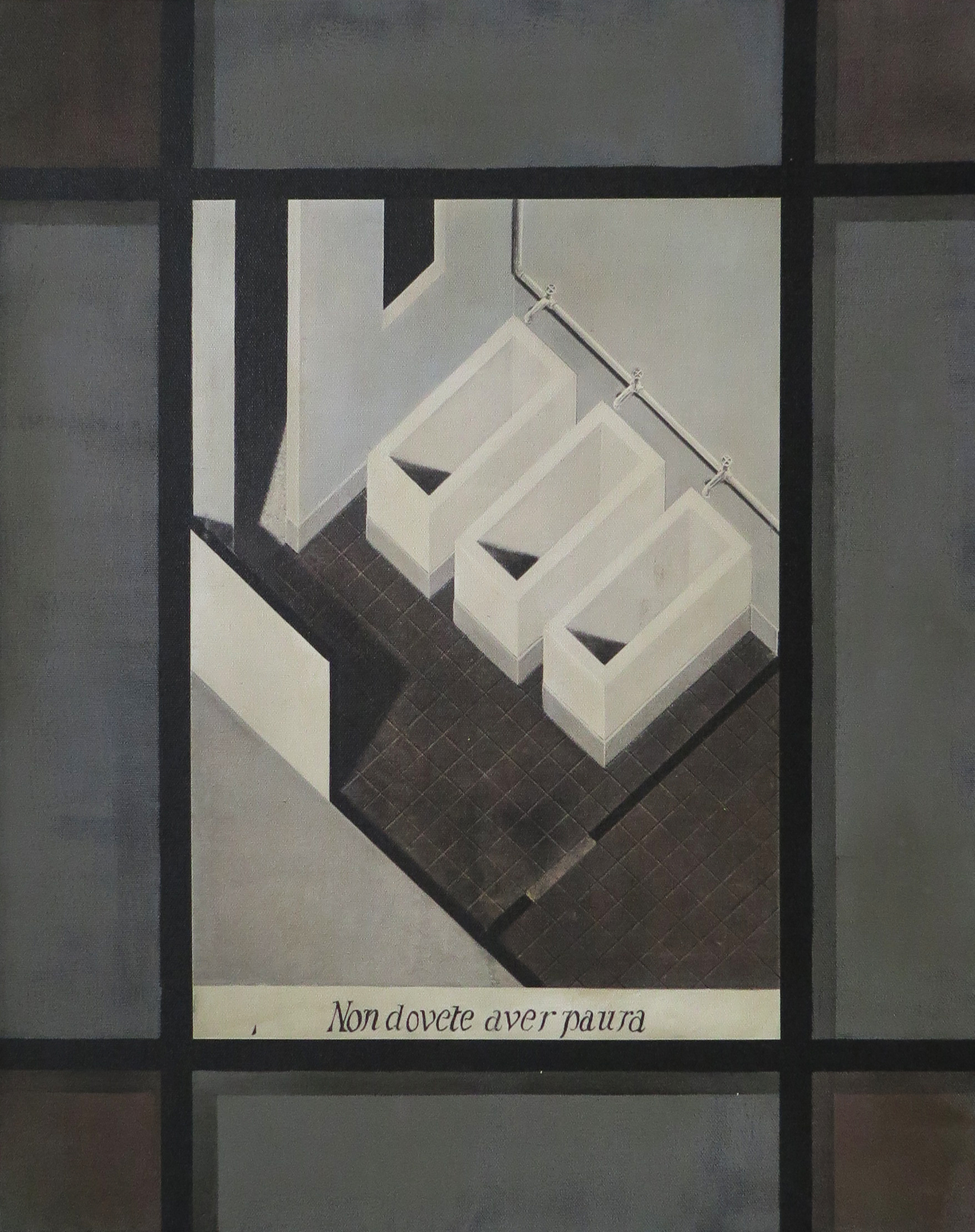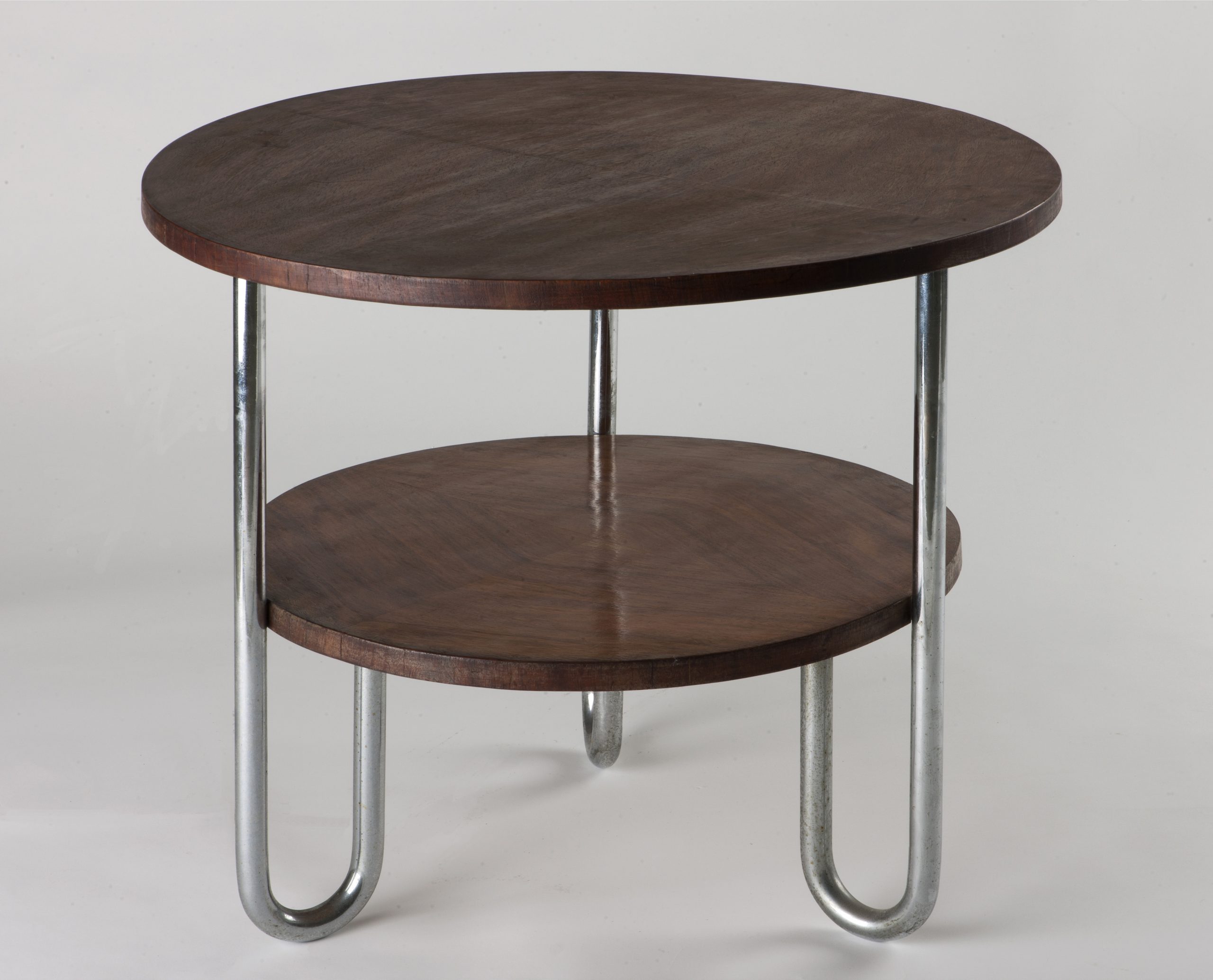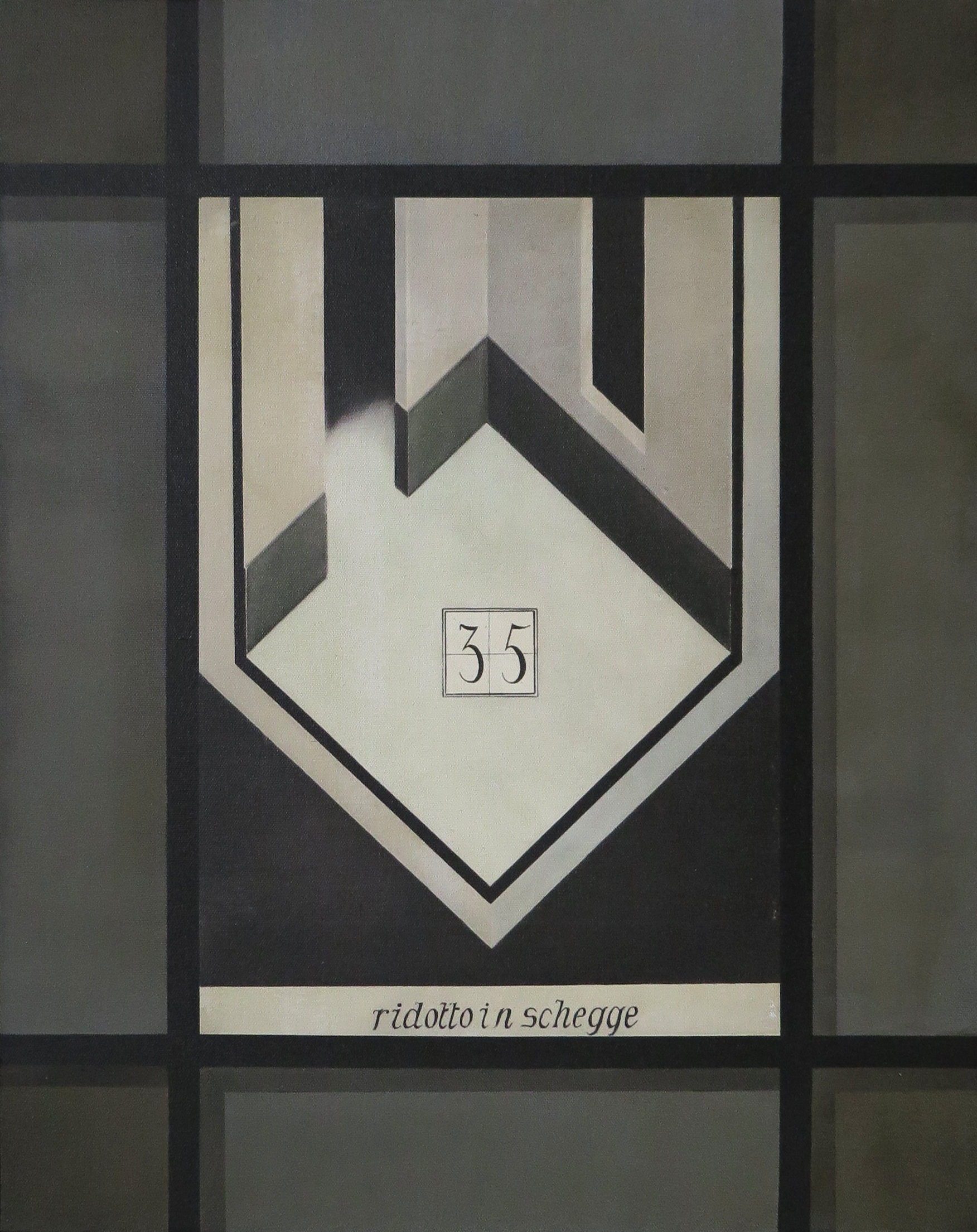April 2nd – April 30th, 2025
Opening: Wednesday April 2nd, from 18
Cantàfora Reload e l’utopia razionalista di Columbus
curated by Ivan Quaroni
On the occasion of Milan’s Art Week and Design Week, Antonio Colombo’s Gallery deepens its relationship with the Milanese artist Arduino Cantàfora by radically transforming the setup of the previous show Anamnesi. The new exhibition, entitled Cantàfora Reload e l’utopia razionalista di Columbus, explores the dialogue between the Modern Language of rationalist furnitures from the 30’s, produced under the brand Columbus, from the Company A.L. Colombo in Milan, and the Postmodern and citationist grammar of Cantàfora‘s painting. The only ecception is the entrance hall which remains unchanged, offering for the first time a side-by-side display of two large-scale artworks, La Città Banale (1980) and Stanza di Città – Roma (1983), respectively displayed at the Venice Architecture Biennale in 1980 and at the Venice Art Biennale in 1984.
The idea of this show, renewed both in terms of concepts and contents, steams from the intriguing intertwined destinies of Arduino Cantàfora and Antonio Colombo. The artist’s father, Alfonso Cantàfora, was, in fact, the technical director for many years at the company founded by the Milanese industrialist Angelo Luigi Colombo, father of the gallerist, who carried on the business until 2023. On one hand, the artist grew surrounded by Columbus furnitures, made of seamless steel tubes – drawn, cold-bent, and chrome-plated – perfect examples of a rational and futuristic conception of interior design. On the other hand, Antonio Colombo witnessed the emergence and the growth of Arduino Cantàfora’s artistic talent, following its development over time and eventually becoming his gallerist.
Cantàfora Reload e l’utopia razionalista di Columbus is, therefore, a show that draws from the biographical events of the two protagonists to initiate a dialogue between two seemingly opposing aesthetic concepts – Modernism and Postmodernism – which find common ground in the subtle web of analogies and correspondences that link Cantàfora’s painting to the rigorous design of Columbus furnitures.
Among the Columbus furniture pieces produced in the 1930s, this exhibition features a selection of historically significant objects, such as the round table and the cantilever chair, first exhibited in 1933 at the Futurist Pavilion of the V Triennale of Decorative and Modern Industrial Arts – the first triennale held in Milan, in the building designed by Giovanni Muzio.
The objects produced by A. L. Colombo, with their ultramodern design, were part of the furnishing of the waiting room of a Civil Airport Station, designed by Enrico Prampolini and built in Parco Sempione.
Of great importance is also the cantilever stool, which was exhibited at the same V Triennale in the House on the Lake for the Artist, designed by the Group of Comaschi Architects and Engineers, leading representatives of Larian Rationalism.
The exhibition also includes a prototype of an armchair by Pietro Bottoni, displayed in the Waiting Room for a Doctor at the VI Triennale in 1936. This “Great Rest Armchair” featured an innovative and elastic suspension with a cross-frame structure.
In Arduino Cantàfora’s paiting, the precision and rationality that define Columbus productions are reflected in the way architectural and urban visions adhere to the rigor of descriptive geometry, between perspective glimpses and axonometric projections that the artist immerses in the lyricism of memory.
The new works presented in this exhibitions are, in fact, recent reinterpretations and re-readings of iconographies painted by Cantàforma between 1970s and 1980s. They are almost D’apres in the manner of Giorgio De Chirico’s self-referential works – reminiscences that the artist sets against abstract backgrounds with a vaguely Neoplasticis flavor, as if they were framed images, snapshots of a “future perfect”, or rather, hypoteses of a past continually reinterpreted through the forms of imposing urban facades and monumental architectural interiors, punctuated by precise chiaroscuro rhythms.
The exhibition will also feature parallel perspectives with enigmatic titles, drawn from The Tempest by Shakespeare, which would later inspire the opening lines of the stories contained in the book Quindici stanze per una casa, published by Einaudi in 1988.
Biographies
Arduino Cantàfora
Arduino Cantàfora was born in Milan in 1945. From a very young age he nurtured a curiosity for organic forms, anatomy and entomology, passions that remained alive throughout his architectural studies. He discovered very early the language of drawing, which became his privileged tool for capturing forms. Cantafora begun his career as a painter by tackling the thorny technical challenge of oil painting, becoming a copyist of Caravaggio. From that moment, the craftmanship and artisanal pleasure of painting would never abandon him.
While studying architecture at Politecnico di Milan, he perfected the pictorial representation of the architecture of historical cities. His interpretations revolve around shadow and light, in a faithfully Caravaggesque inspiration. The skills he matured in these years will be invaluable during his collaboration with architect Aldo Rossi (1973-1978), but they will also influence his future work, dominated by the translation of architecture into painting. In 1973, Cantafora exhibited La Città analoga at the Milan Triennale, a large-scale painting now owned by Museo del Novecento in Milan. This painting became the manifesto of La Tendenza, an architectural movement that reintegrates elements of 20th-century European Rationalism by emphasizing the history of places as central to projects. In 2012, La Tendenza was the subject of a retrospective at the Centre Pompidou in Paris. Cantafora participated again in the Milan Triennale in 1981 and 1988. He also took part in the Biennale di Architettura in Venice in 1978 and 1980, and in the Biennale d’Arte in 1984. Between 1985 and 1986, he was in Berlin at the invitiation of the Deutscher Akademischer Austauschdienst (DAAD). The city inspired him to create a series of paintings that were exhibited at the Martin-Gropius-Bau Museum in Berlin. Two large canvases, Das Andere Berlin, 1984 have been acquired in 2006 by the National Museum of Modern Art (MNAM) at the Centre Georges Pompidou in Paris. These two paintings are part of the 89 works by Cantafora in the collection of the museum. During the 1990s, Cantafora conceived several set designs for La Scala in Milan and for other prestigious venues such as the Aix-en-Provence Festival. His work as a set designer earned him the second place of the Ubu Prize, Italy’s most important theatre award. Tra il 2022 e il 2023, è invitato a due importanti mostre pubbliche: “Architectures impossibles” al Musée des Beaux-arts di Nancy e “Un tiempo propio” al Centre Pompidou di Malaga, dove sono esposte due grandi tele berlinesi della collezione del Centro Pompidou di Parigi.
Arduino Cantàfora è stato professore di architettura all’Università di Venezia (IUAV) dal 1982 al 1986, all’Accademia di Architettura di Mendrisio (AAM) dal 1998 al 2011 e “visiting professor” alla Yale University nel 1988. In 1989 he was appointed full professor at the Ecole Polytechnique Fédérale de Lausanne (EPFL), where he was chairman of the Department of Visual Representation. He is honorary professor at EPFL since 2011. He is the author of several publications on architecture and education, as well as an autobiographical novel and short stories published by Einaudi.
Columbus Furnitures
The creation of metal tube furniture started by A.L. Colombo’s company in 1933 and ended in the immediate post-war period. This production begins with the acquisition of the exclusive license for the Italian manufacturing of the tubular furniture made by the Zurich company Wohnbedarf, which had developed models with many architects, such as Alvar Aalto, Sigfried Giedion, Werner Moser, Alfred Roth or Flora Steiger, but above all with Marcel Breuer who from the mid-twenties had designed with tubular steel at the Bauhaus.
Columbus creates, on license, “original” furniture with the specialized quality competence in the manufacturing of the steel tube, which is the result of a mechanical process that requires a deep handcraft expertise and ability. Therefore it’s not by chance that the architect Giuseppe Terragni – and before him Giuseppe Pagano, for the design of a popular umbrella stand – turned to Columbus for metallic tube furniture of the Como buildings of the second half of the Thirties, such as the Casa del Fascio or the Sant’Elia nursery school. Armchair and chair, with the characteristic springy cantilevered frame, adopted in both architectures, were produced in small “industrial” series.
Among the Italian designers, another prestigious Columbus collaboration was the one with Piero Bottoni, during the VI Triennale di Milano in 1936, where for the waiting room of a doctor different solutions for armchairs based on an original elastic crossing are tested.
Columbus’ is an important story in the history of Italian design, well preserved and re-built thanks to the meritorious will of Antonio Colombo, son of Angelo Luigi, who wanted to create the Columbus Archive, encouraging studies, publications (the volume Flessibili splendori. Il mobile in tubolare metallico. Il caso Columbus , Electa, 1998), initiatives and exhibitions. Such as those ones that occurred in 2019, in the occasion of the centennial of the foundation of his father’s company.
The Columbus Archive represents a unicum in the world: a well safeguarded heritage, made up of hundreds of original furnishings, designs and drawings, catalogues and advertisement – both from the company and competitors, revealing a universal curiosity towards the world as a whole – wooden molds for production and dozens of thousands of documents. A business archive, active since the mid-Nineties, which testifies of the vitality of certain advanced entrepreneurship in Italy, the merge of capabilities of R&D, dialogue with the project, and an appropriate and visionary cultural substance.
